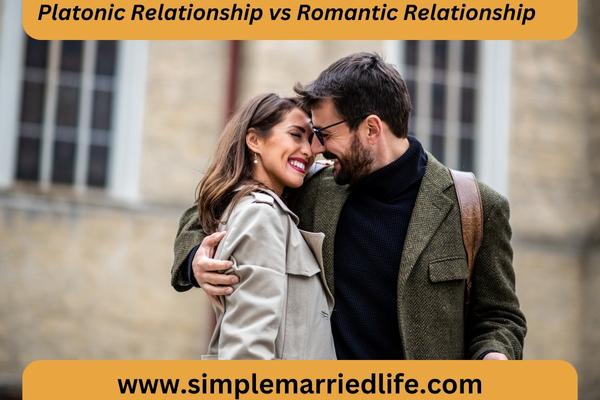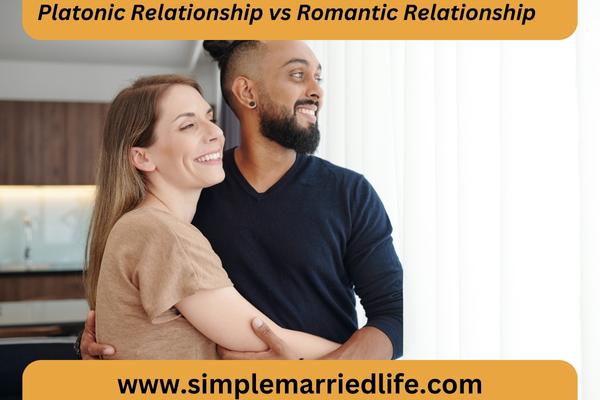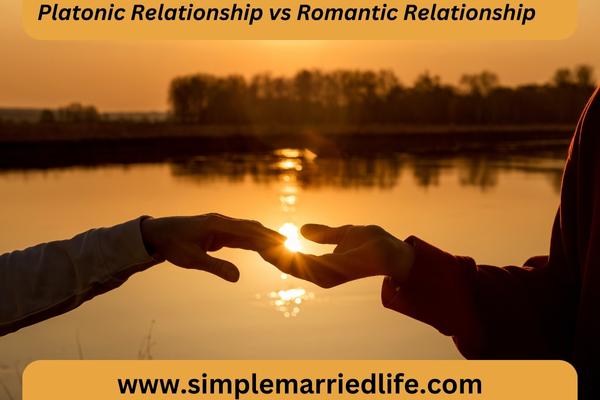Platonic Relationship vs Romantic Relationship
Relationships are complex, with many layers and forms. Two of the most common types are platonic and romantic relationships.
While there can be some overlap, there are several key differences between the two. Understanding these distinctions is important for managing expectations and nurturing healthy connections.
Defining Platonic and Romantic Relationships
A platonic relationship is one that does not involve romantic feelings or sexual desire. Rather, these connections are built on mutual interests, caring, and enjoyment of each other’s company. Friendships are the most common form of platonic relationship.
In contrast, romantic relationships do involve romantic love and attraction. Partners often have both emotional and physical intimacy.
These bonds have extra elements like passion, commitment, possessiveness, and expression of affection. Romantic relationships usually involve some level of exclusivity too.
Key Differences
1. Commitment Level
In a platonic relationship, there is no defined commitment. Friends can go long stretches without communicating or spending time together, with no hard feelings. Romantic relationships however require more constant contact and commitment from both people to nurture the bond.
2. Physical Intimacy
By definition, platonic relationships do not involve physical intimacy the way romantic ones do. There may be the occasional hug or touch, but kissing, handholding, and sex occur exclusively in romantic relationships.
3. Emotional Connection
The emotional connection looks different in platonic and romantic bonds. Friends deeply care for one another and offer emotional support. However, romantic partners share a unique intimacy and usually prioritize each other above other relationships.
4. Jealousy
Experiencing jealousy over a partner spending time with others or having outside friendships points to a romantic relationship. Possessiveness and jealousy very rarely occur in friendships.
5. Exclusivity
While friendships can feel special, there is not expectation of exclusivity. Most people have multiple friend groups and close friends. Romantic relationships generally involve some level of exclusivity, where partners only pursue that type of bond with each other.
6. Criteria for Partners
The traits we look for in platonic friendships differ from romantic relationships. While values and interests alignment matter for all bonds, characteristics like physical attraction, chemistry and financial prospects play a larger role in romantic partnership selection.
7. Boundaries
Clear boundaries are needed in platonic relationships to avoid complications or mismatched expectations. These can include limits on communication frequency, physical contact, flirting and disclosure of certain personal information. Romantic relationships can handle more permeability and closeness.
8. Breakups
Breakups are inevitable in romantic bonds, either through ghosting, conscious uncoupling or more dramatic splits. Friendships certainly do fade or end over time as well.
However, platonic breakups usually lack the same level of heartbreak and devastation often felt by romantic partners during separation.

Navigating the Gray Area Between Platonic and Romantic
The lines between friendship and romantic love can often blur. As bonds deepen, affection grows, and vulnerabilities are revealed, relationships can migrate from one category to the other.
How do you navigate when a formerly platonic friendship takes on a somewhat romantic tone? Or when romantic sparks fizzle, but deep care still remains? Here are some tips:
1. Look for signs
Has flirting increased? Do you feel pangs of jealousy when they talk about other dates? Have you started exchanging gifts or dressing up for your outings together? Pay attention for subtle clues that intimacy is rising.
2. Check in with yourself
Examining your own emotions can provide clarity. Are you starting to daydream about them? Do you feel excited vs. calmly content when hanging out? Taking an inventory of your feelings helps articulate what this relationship means to you.
3. Invite open discussion
Casually bringing up the evolving dynamic gives room for both parties to share where they are at. Ask things like “I’ve really enjoyed getting closer lately” or “Have you noticed any shifts in our friendship?” Maintaining bidirectional communication is key.
4. Set boundaries if needed
If one person catches more feelings than the other, restating boundaries helps. Things like less physically affection, keeping dates in public or taking space for a short while can help rebalance a teetering relationship.
5. Accept the chaos
Sometimes two friends-turned-almost-lovers can live and let live in the complexity for some time. If both parties are fulfilled, respectful, and communicating, there does not need to be a firm label slapped onto it.
When navigating an undefinable relationship is maintain open channels for voicing needs, wants, and comfort levels. Leaning into ambiguity can be freeing when done consciously.
However, if confusion festers, err towards a definitive conversation and boundary reset. The friendship foundation means this can be done kindly.

Healthiest Relationship Traits
All strong connections, regardless of type, share key traits. Focusing on cultivating these allows relationships to not just survive, but thrive.
Trust
Trust creates a safe harbor for vulnerability and care to blossom. Building trust happens through dependability, honesty, and keeping confidence.
Shared values
Relationships with moral alignment allow for greater understanding and reduce judgment. Core values inform priorities and perspectives on life.
Empathy
The ability to understand and share the feelings of another person strengthens bonds tremendously. Empathy signals you truly see someone.
Accountability
Willingness to apologize for mistakes and lovingly call out issues when they arise deepens integrity. Accountability helps relationships evolve.
Unconditional support
Consistent reassurance that you are there for someone no matter what instills confidence. Support during highs and lows is powerful.
Quality communication
Being present and an engaged, responsive listener maintains harmony. Communication is the bedrock for resolving inevitable conflicts.
The Takeaway
While platonic and romantic relationships both offer meaningful connections, understanding the differences helps us craft relationships with appropriate boundaries and best nurture each unique bond. The distinction may shift as friendships or partnerships deepen.
However, examining the type of commitment, intimacy, and connection can provide clarity on which camp a relationship falls into.
The key is open communication. Regularly discussing relationship status and feelings with partners ensures proper expectations and treatment. After all, mutual understanding and respect are cornerstones for all healthy relationships, regardless of type.


